The Valleys of Pakistan
By Zeenat Hisam | Travel | Published 7 years ago
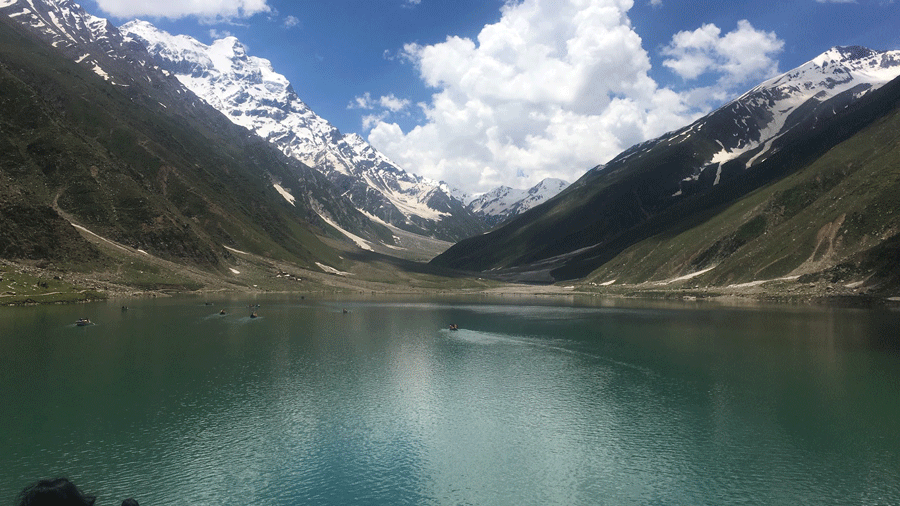
Lake Saiful Muluk.
One of the most vivid memories I have of the road trips I took some four decades ago – from Karachi to the Northern Areas – was the sight of women, tending to their cattle, or taking a respite during the long trek to a neighbouring village. All those visible along the narrow, winding roads we traversed, which ran between verdant mountains on one side and deep ravines and gorges on the other, deliberately kept their faces hidden from passers-by. If they realised even a glimpse of their faces were visible, they would hurry to pull their aanchals as far as they could drape themselves to hide their faces. But that was then.
Summer 2018: While cruising along the circuitous roads to the Kaghan and Neelum valleys, I saw women along the way, but this time they were facing the road. In Neelum valley, women – singly, or in pairs or groups – strode confidently down the road, faces uncovered, as vehicles passed them by. I noticed that unlike my last visits and the sight of mostly barefooted children, most of those visible were now wearing shoes. Also, there was the unfamiliar but welcome sight of young girls in droves, coming out of schools. And also new was the sight of countless long trailers, ferrying automobiles from Karachi to up country on what are now clearly much wider roads.

Shardha Temple in Neelam Valley.
Those were the fleeting signs indicating change. But many things remain the same. Among those, the sight of children toiling alongside adults – all the way from Karachi up to the Babusar Pass, where among the kiosks and tea-stalls en route, young boys serve tea and edibles. Long-tressed, handsome Hashim, about 13, for example, was roasting corn in a makeshift oven against the breathtaking view of the snow-covered peaks of the Himalayan range. But that was not his only occupation – he is also a student. At the lush green Siri Paa-yai Lake (the combined name of two locations because of its shape from an aerial view – Siri is the the lake and Paa-yai the green meadows) – young boys were working at each stall along the trail that led to the rolling meadows in the area. Most impressive, I thought, were nine-year-old Sonia, and her younger brother, whom I encountered in the Neelum valley on our way back from Sharda. Dressed in an all-blue school uniform, head draped in a dupatta, Sobia, lithe and energetic, invited us inside the little hut by a kiosk, stoked the logs in the oven, and served tea, pakoras and jalebi, while her father offered his Friday prayers. In his absence, she was in charge of the kiosk. A student of class six, she told us with pride, she helps her father after school.
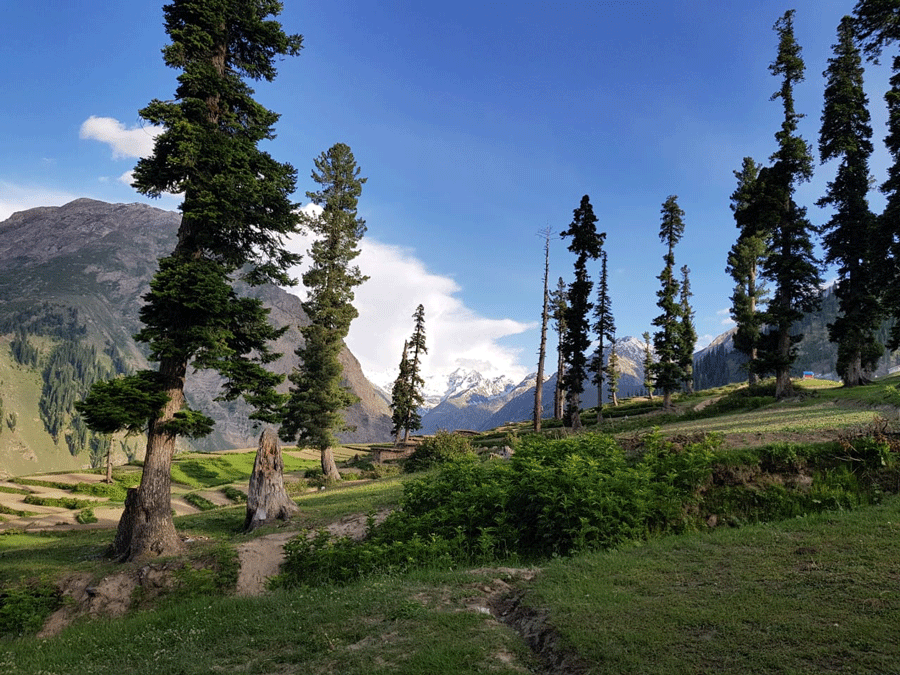
Lalazar, Kaghan Valley.
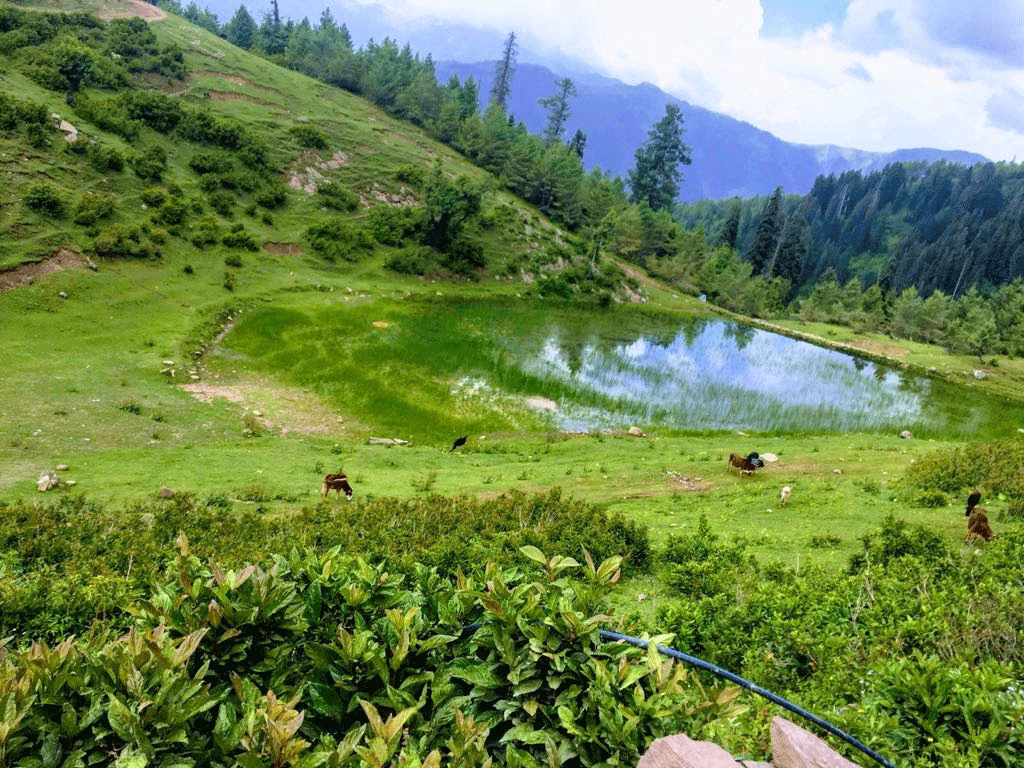
Lake Siri, Kaghan Valley.
The valleys are in transition, but change is slow. Nonetheless, the valleys are doing better in the education field than other districts, and gender parity is narrowing. Mansehra district (wherein lies the Kaghan Valley) is ranked 23 among the 155 districts in the country, with the gender parity registered at 79.93. Neelum Valley is behind Kaghan, with a ranking of 58 and gender parity at 71.04. On the whole, Azad Jammu and Kashmir (AJK) leads the country in education, with three districts (Mirpur, Kotli and Bhimber) at the top, according to Alif Ailaan, a non profit organisation working in the field of education in Pakistan. Unfortunately, AJK is ranked the worst in (educational) infrastructure. In the Neelum valley, visitors note poor civic infrastructure, fewer livelihood opportunities, inadequate facilities and lack of solid waste management. Agriculture engages just about 10 per cent of the population. The community and social services sector absorbs 30 per cent of the labour force, while construction provides employment to 21 per cent.
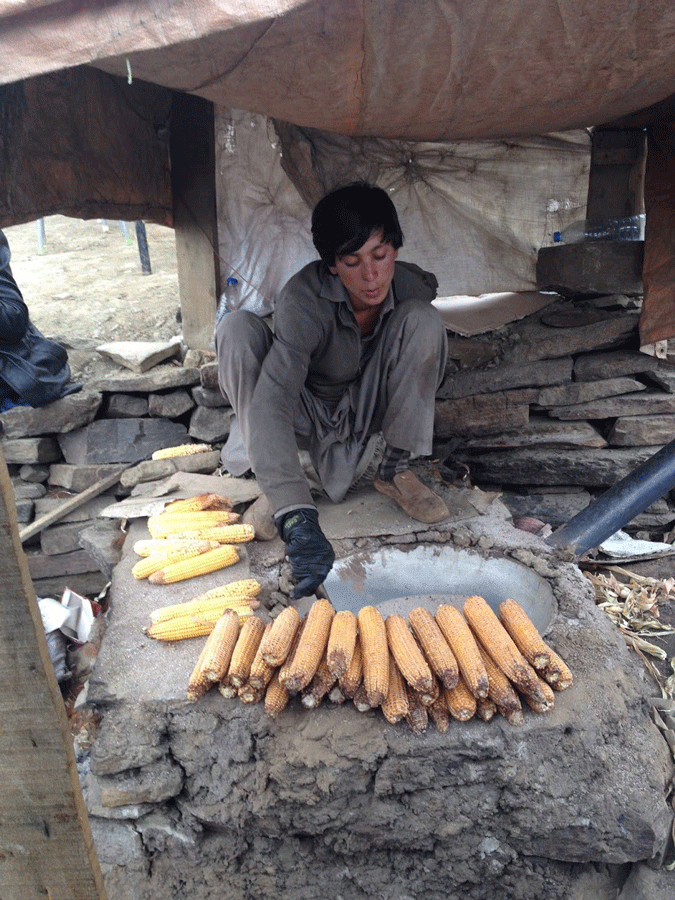
Hashim roasting corn at Babusar Pass.
There are no visible signs of the devastating 2005 earthquake in the two valleys. All I came across as a reminder, was a fading Earthquake Reconstruction and Rehabilitation Authority (ERRA) office nameplate at one place. In Neelum, the brightly coloured cottages that dot the mountain, glitter from afar. They look new. But when Misar Bibi invited me inside one of these – her abode in Kutton village – it told a different story. The place was shabby with no utilities. Misar Bibi’s brother, Asim, and his family live there too. The extended family has a small piece of land where they grow maize for subsistence and the men supplement their income through manual labour in road construction.
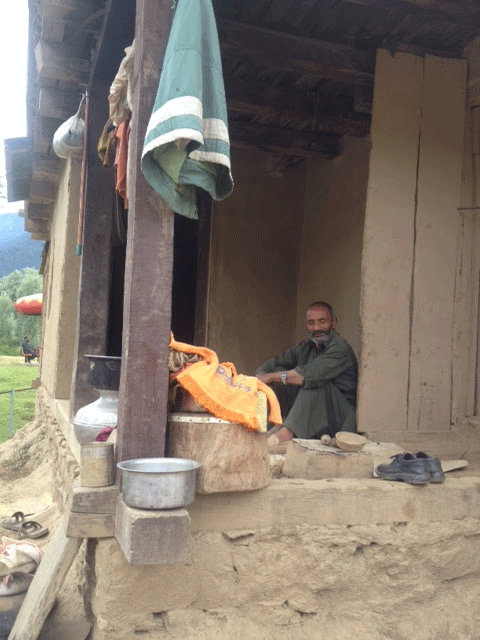
Sobia Bibi’s brother in their hut.
In Kaghan valley, it was Naran which I found changed beyond recognition: in the early 1980s, there were just a couple of dhaabas and the PTDC cottage stood forlorn in the forest along the River Kunhar. Today Naran has bloomed into a medium-sized town with a long stretch of bazaar that begins with the ‘Tent Bazaar’ lined with faded, sturdy tents bearing the names of the international aid agencies that came in to assist the earthquake relief effort. The Tent Bazaar provides shelter to hundreds of local workers who come from adjoining areas for work during the tourist season. The Tent Bazaar gives way to well-stocked shops, restaurants and motels. The road is narrow and often gets jammed with the rush of tourists.
The ERRA website tells me that 97 per cent of the houses destroyed in the earthquake have been rebuilt. Its April 2018 reconstruction portfolio states that 71.7 per cent of all projects have been completed. Of all the categories, livelihood and social protection projects lag behind at 59 per cent and 40 per cent completion respectively. Life for mountain communities is harsh and a constant struggle against the forces of nature and climate change.
Development of mountain tourism can contribute to the enhancement of livelihood opportunities in the region manifold. It is, after all, one of the most scenically beautiful areas in the world.


